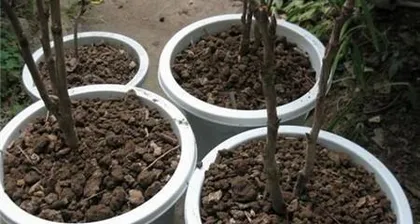Potting Time and Care Methods for Marigolds

Marigold is a beautiful perennial herbaceous plant, with bright colors, long flowering period and strong vitality, widely used in potted plants and garden decoration. The correct potting time and care methods for marigolds are the key to ensuring their healthy growth and long-term ornamental value. This article will introduce you to the care techniques for marigolds in detail from aspects such as potting time, soil selection, watering and fertilizing, sunlight exposure, temperature and humidity, and disease prevention.
Selection of Potting Time
The correct potting time is crucial for the growth of marigolds, and the potting time may vary for different types of marigolds. Generally, spring and autumn are suitable for potting marigolds, while in summer and winter, it is necessary to avoid excessive sun exposure or excessive cold. Before potting, it is necessary to prune and adjust the density of the marigolds.

Appropriate Soil Selection
Marigolds prefer soft and fertile soil, which can provide sufficient oxygen and moisture to help them grow better. For soil selection, you can use a nutrient soil mixed with leaf mold, river sand, and vermiculite to meet the nutrient needs of marigolds.
Proper Watering and Fertilizing
Watering and fertilizing are essential parts of marigold care. Generally, excessive watering and fertilizing should be avoided. Watering and fertilizing can be done once or twice a week. At the same time, it is necessary to control the concentration and dosage to avoid damaging the root system.
Reasonable Sunlight Exposure
Marigolds like warm environments and plenty of sunlight, but they also need to avoid direct sun exposure or long-term strong light. Generally, you can place them in a place with appropriate scattered light or semi-shade.

Proper Temperature and Humidity
Marigold growth requires suitable temperature and humidity. Generally, a temperature between 15°C-25°C and a humidity between 50%-70% are more suitable. It is necessary to avoid cold or excessively dry environments.
Timely Disease and Pest Control
If you find abnormal symptoms such as yellowing or wilting of marigold leaves, it is likely that they have been invaded by fungi, bacteria, or pests. At this time, timely disease and pest control is necessary. You can use appropriate fungicides and pesticides, but excessive use should be avoided.
Careful Pruning and Propagation
Pruning and propagation of marigolds are important means to ensure their health and beauty. When pruning and propagating, it is necessary to ensure the hygiene and sharpness of the tools, and handle them according to the actual situation.
Seasonal Care
Marigolds need different care in different seasons. In spring, carry out pruning and propagation; in summer, pay attention to avoiding sun exposure, increase watering and prevent pests and diseases; in autumn, carry out root division and transplantation; in winter, avoid excessive cold and dryness.
Proper Moving and Placement
Proper moving and placement can enable marigolds to better absorb sunlight and oxygen, promoting their growth and development. However, it is also necessary to pay attention to the time and method of moving and placement to avoid damaging the roots and leaves.
Water Conservation and Environmental Protection
When watering and fertilizing, it is necessary to save water and reduce pollution and damage to the environment. You can choose rainwater or use household wastewater for irrigation, and avoid excessive use of chemical fertilizers and other chemicals.
Pay Attention to Personal Hygiene and Cultivation Environment
Personal hygiene and cultivation environment are important factors in ensuring the health of marigolds. It is necessary to maintain a clean and hygienic environment to avoid pollution and the invasion of infectious diseases.
Timely Garbage Disposal and Soil Renewal
Timely garbage disposal and soil renewal can effectively prevent soil pollution and root rot. Generally, soil can be replaced every 3-6 months.
Reasonable Potted Plant Design and Selection
The design and selection of marigold potted plants need to be adjusted and selected according to the actual situation. Generally, you can choose types and sizes of pots suitable for the growth and development of marigolds.
Learn from Others' Experience and Skills
In the process of caring for marigolds, you can learn from others' experience and skills, and learn professional care techniques and methods, so that marigolds can grow and develop better.
Marigold is a beautiful perennial herbaceous plant, and its care techniques cannot be ignored. Details such as correct potting time, soil selection, watering and fertilizing, sunlight exposure, temperature and humidity, and disease prevention need to be paid attention to. I hope this article is helpful to you, and I wish you can successfully create beautiful marigold potted plants.